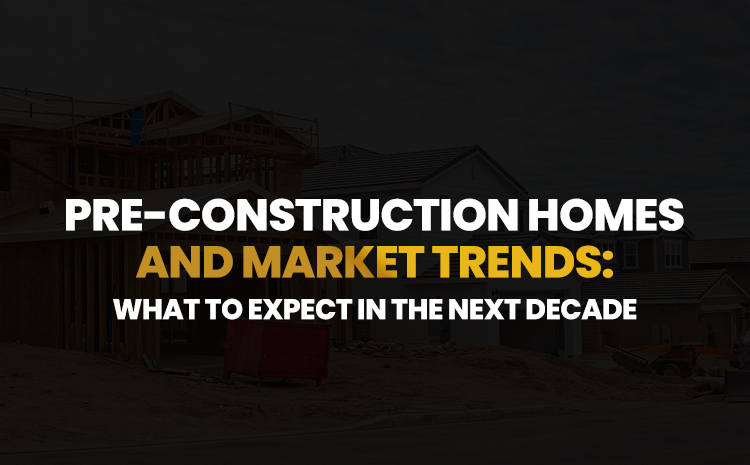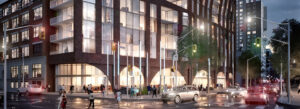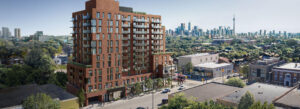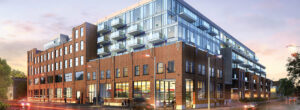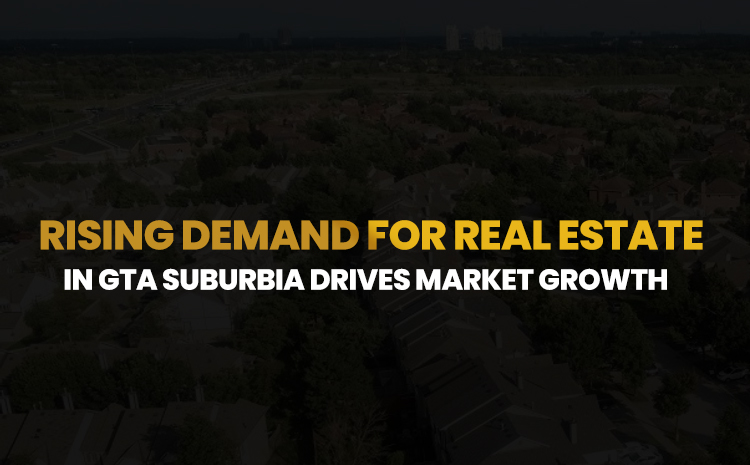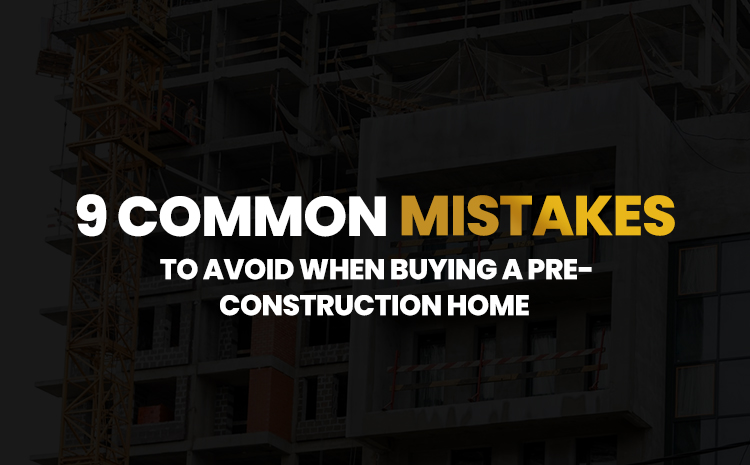Imagine a future where homes and condos in Toronto have sustainable features like energy-efficient appliances and green roofs1.
Sounds a bit like science fiction, doesn’t it?
Well, this is real and we are heading that way faster than most will anticipate.
This future is coming, as Toronto, Montreal, Calgary and Vancouver’s real estate market changes a lot in the next decade.
Virtual reality (VR) and augmented reality (AR) will change how we market and buy pre-construction properties1. You’ll get to experience buying homes in a new way. Smart home technology will also be common, letting you control your home from anywhere1.
As the housing market continues to evolve, with new trends and developments constantly emerging, it’s essential for homebuyers and investors to stay informed about the latest market forecasts and predictions.
The real estate market is constantly evolving, with new trends and strategies emerging each year. One increasingly popular option for potential homeowners and investors is pre-construction homes, also known as off-plan properties. These are properties that are still in the construction phase and have yet to be completed.
In this article, we will delve into the world of pre-construction homes and explore what to expect in the next decade. We will discuss the benefits of investing in these properties, the challenges that may arise, and offer insights into the residential construction outlook. Additionally, we will examine how potential changes in policies, such as the introduction of new capital gains tax laws, could impact this sector.
If you are considering investing in real estate or buying a new home, understanding pre-construction homes and market trends is essential. So, let’s dive in and explore what lies ahead in the exciting world of pre-construction homes.
In this blog post, we get into the world of pre-construction homes and explore the market trends and forecasts for the next decade. We will examine the benefits of investing in pre-construction homes, the challenges that may arise, and what to expect in terms of residential construction outlook.
So, whether you are considering purchasing a pre-construction home for yourself or seeking investment opportunities, this article will provide valuable insights to help you make informed decisions.
One of the key trends that is expected to shape the pre-construction home market in the next decade is the emphasis on community living.
We can expect to see an increasing number of mixed-use developments that combine residential properties with shops, offices, and recreational spaces.
In fact, we have been experiencing this for a while as shown in this older residential + commercial mix-use building:
This means that residents will have easy access to amenities, services, and entertainment options within their community, fostering a vibrant and convenient lifestyle.
These communities are likely to feature shared spaces and facilities that encourage social interaction and foster a sense of belonging. From parks and playgrounds to community centers and fitness facilities, pre-construction homes will be designed to create a strong sense of community and promote a healthy and active lifestyle.
Additionally, sustainability and energy efficiency are expected to become increasingly prominent in pre-construction homes. As the world grapples with the impacts of climate change, builders and developers are focusing on eco-friendly construction methods, energy-efficient appliances, and smart home technologies. These advancements not only benefit the environment but also result in long-term cost savings for homeowners. Expect to see an array of green features, such as solar panels, rainwater harvesting systems, and energy-efficient insulation, in pre-construction homes over the coming years.
In terms of the residential construction outlook, experts predict a continued demand for pre-construction homes as the population grows and urbanization accelerates.
With a limited supply of housing in many markets, especially in densely populated areas, pre-construction homes offer an attractive solution for those looking to secure a property ahead of time. This demand is expected to drive new construction projects and result in a wide range of options fr buyers to choose from.
As we dive deeper into this topic, we will explore the potential benefits and drawbacks of investing in pre-construction homes, the factors to consider when making a purchase, and how to navigate the pre-construction market. So, if you’re curious about the future of the housing market and want to stay ahead of the game, keep reading to discover what the next decade holds in store for pre-construction homes.
Pre-construction projects in Toronto will focus more on community living1. They will have shared spaces and amenities for everyone. You’ll see more mixed-use developments, which combine homes, shops, and offices, making life easier1.
Sustainability will be big, with homes near public transport and bike lanes1. You’ll also have more options to customize your pre-construction townhomes, making them your own1.
In Canada, the housing market is also changing. In 2023, the number of new homes started stayed steady in big cities, but apartments saw a big jump2. Single-family homes, however, saw a drop2.
As we move forward, it’s key to keep up with these changes. The pre-construction market in Toronto is set for big changes, from new financing options to better safety1.

Key Takeaways
- Sustainable features like energy-efficient appliances and green roofs will become standard in pre-construction homes and condos in Toronto.
- Virtual reality (VR) and augmented reality (AR) will revolutionize the marketing and buying experience for pre-construction properties.
- Smart home technology will be widely integrated into pre-construction developments, offering enhanced convenience and control.
- Community-centric living will be a priority, with shared spaces and amenities fostering a stronger sense of community.
- Mixed-use developments combining residential, commercial, and retail spaces will provide residents with convenient access to essential services.
Sustainable Construction Practices
In Canada, the pre-construction market is getting greener. Homebuyers will see more eco-friendly homes and energy-saving features. Developers are meeting the demand for green buildings that cut down on carbon emissions3.
Eco-Friendly Features and Materials
Now, energy-efficient appliances and green roofs are common in new homes and condos3. New materials like 3D-printed buildings and robots help reduce waste and make buildings last longer4. Tools like Integrated Environmental Assessments (IEAs) help lower the environmental impact of buildings4.
Reducing Carbon Footprint
The construction industry is going green to lower emissions and save resources5. They’re using renewable energy, saving water, and new tech to make communities greener5. These green practices cut down on waste and the carbon footprint of buildings5.
| Sustainable Construction Trends | Key Statistics |
|---|---|
| 3D Printing | The most common trend in sustainable building, offering design flexibility and quick production4. |
| Circular Construction | Makes buildings last longer with smart design and digital tools4. |
| Immersive Construction | Improves building life with digital tools4. |
| Construction Robots | Boost sustainability and efficiency by doing tasks like site checks and demolition4. |
By adopting these green building methods, Canada’s pre-construction industry is setting a new standard. They’re cutting down on carbon emissions and building greener communities for homebuyers345.
Virtual Reality and Augmented Reality in Marketing
The real estate industry is changing fast, thanks to virtual reality (VR) and augmented reality (AR) technologies. These technologies are changing how buyers look for and experience homes before they are built.
In 2023, the AR industry was worth $56.3 billion6. By 2032, it’s expected to hit $1.2 trillion6. Real estate pros who use these new tech see big wins, like a 40% increase in sales6 and cutting staging costs by up to 97%6.
Immersive Virtual Tours
Now, buyers can tour homes before they’re built from anywhere7. These virtual tours help properties get noticed by people all over the world7. They’re great for buyers too, letting them see more homes without leaving their current place, especially good for busy people or those living far away7.
Revolutionizing the Buying Experience
AR is changing how we buy homes6. With AI, buyers can see what a home will look like remodeled or landscaped6. Companies like REimagineHome and Matterport are leading this change, using AR and AI for a better experience68. This mix of AI and big data with virtual tours makes buying homes more personal and effective7.
The future of real estate marketing is all about VR and AR8. By 2025, the AR and VR market in real estate will hit $80 billion8. Properties with VR tours get 87% more views, showing how much people want VR in real estate8. As these techs get better, buying a home before it’s built will be more immersive, personal, and easy than ever.
Smart Home Technology Integration
In the next decade, pre-construction homes will see a big change thanks to smart home tech9. Buyers will get systems that let them control lights, heating, cooling, and appliances from afar9. This tech makes life easier, uses less energy, and keeps homes safe, making it a big deal in real estate9.
The smart home market is growing fast, in homes and businesses alike10. More people know about smart homes thanks to marketing and the media, and these devices are getting cheaper and more accessible10. Companies, builders, and service providers are working together to make smart homes better and more connected10.
Smart buildings use less energy, which is good for the planet and saves money9. Things like smart lights, thermostats, and efficient appliances are now common in new homes9. These features let homeowners control their energy use and help the environment9. Plus, smart buildings have better security, making homes safer for everyone9.
Smart tech in buildings means people can control things like lights and temperature with their phones9. But, setting up these smart features can be expensive for builders and owners, and they need regular updates to work well9. There are also worries about keeping personal info safe in these connected buildings9.
As homes are built before they’re sold, smart home tech will play a big role in the future of real estate910. Both developers and buyers need to understand the pros and cons of this tech to make homes better for tomorrow910.
Community-Centric Developments
The pre-construction housing market in Canada is changing, focusing more on community-centric developments. Buyers want homes that offer a place to live and build community bonds11. In Kitchener and Guelph, fourplexes provide various housing options, making neighborhoods inclusive and friendly11. These developments tackle the housing crisis and create lively, communal spaces for people to meet and connect with their community11.
Shared Spaces and Amenities
Pre-construction townhomes lead in this community-centric trend, with shared spaces and amenities12. They have parks, playgrounds, and social areas for people to meet and feel part of a community12. These shared spaces boost neighborhood engagement and help residents feel they belong11.
Fostering a Sense of Community
The move to community-centric developments shows in property design and the services they offer12. Pre-construction condos now have fitness centers, lounges, and gardens to encourage social interaction and a strong sense of community12. This approach to building homes aims for a vibrant, inclusive living experience, more than just a place to live11.
“The future of pre-construction homes is not just about building a structure, but about creating a community where people can thrive and connect with their neighbors.”
As the market grows, developers see the value in community-centric design and its benefits for residents and neighborhoods12. By building a strong sense of community, these developments will be key to lively, engaged communities across Canada111213.
Mixed-Use Developments
The real estate scene in Canada is changing, with a big push for mixed-use projects. These projects blend living, working, and shopping spaces together14. They’re making communities more lively and easy to get around, meeting the needs of today’s buyers14.
Residential, Commercial, and Retail Spaces
Mixed-use projects aim to give people a better life14. They mix homes, like condos or townhomes, with shops, restaurants, and services14. This setup means people can find what they need close to home, cutting down on travel and supporting a greener lifestyle14.
Walkable Neighborhoods
These projects focus on creating neighborhoods you can walk around in14. They’re built with wide sidewalks, bike paths, and green streets to encourage walking or biking14. This not only helps people stay healthy but also lessens the need for cars, making the area more eco-friendly14.
As more people want places that offer everything in one spot, mixed-use developments are set to grow in Canada14. They give buyers a chance to live in Mixed-Use Developments, Integrated Spaces, Residential-Commercial-Retail, Walkable Communities, and Convenient Living14.
Sustainable Transportation Options
Urban areas are changing, and a big focus is on green transport15. A new project near the Arbutus SkyTrain Station will have 30 floors of homes and shops15.
It will offer over 200 rental units, with 20% going to those earning less, helping moderate-income families15.
This matches Vancouver’s Broadway Plan and BC’s aim for denser areas around transit, meeting Transport 2050 and Metro 2050 goals15.
Proximity to Public Transit
Future homes are focusing on being close to public transport15. The project plans to start in late 2025 and finish by 202915. The goal is to make more money for transit in Metro Vancouver15. With Vancouver growing, this focus on transit-friendly communities is key to handling more people and their needs15.
Pedestrian and Cyclist-Friendly Infrastructure
New homes are also making it easier for walkers and bikers16. Many condos in Ottawa aim for LEED certification, showing they care about saving resources and improving air quality16. They add bike storage, repair spots, and lanes to encourage biking16. Condos in Ottawa also have wellness centers like yoga studios and spas to keep residents healthy16.
These green transport options cut down on car use and make life better for people, creating a greener city15. The project will help fund transit and add more homes in a growing area15.

The above image is generated with Artificial Intelligence.
Here is the Hazell Mcallion Line’s rendering in the Metrolinx website:

Image Source: Hazell McCallion LRT – MetroLinx.com
Wouldn’t you say they are pretty close or there are glaring similarities?
The AI is simply 10-20 years out – but the density and our path to this type of living in Mississauga, Vanh, Toronto, Vancouver and other urban dense markets is already underway!
Now, with that said, let’s look at the reasons why we invest in Sustainable Transportations:
| Sustainable Transportation Features | Reasons / Benefits |
|---|---|
| Proximity to Public Transit | Less need for personal cars, better access, and more support for public transport |
| Pedestrian-Friendly Infrastructure | Boosts walking, encourages exercise, and makes neighborhoods more liveable |
| Cycling Infrastructure | Makes eco-friendly travel easier, lowers emissions, and betters health |
Pre-Construction Homes and Market Trends
Customization Options for Pre-Construction Townhomes
The pre-construction townhome market in Toronto is booming, offering many customization choices17. Buyers can pick from various finishes, fittings, and layouts to make their homes unique18. This makes pre-construction townhomes a great choice for those wanting a home that stands out.
Personalized Living Experiences
Pre-construction townhomes are more than just places to live; they’re about making your home special18. Developers add new features and amenities that meet what buyers want. With smart home tech and community areas, these homes offer a new level of living18. This focus on customization and community is changing the pre-construction townhome market in Toronto.
| Feature | Benefit |
|---|---|
| Customization Options | Personalized living experiences, unique design elements |
| Smart Home Technology | Convenience, efficiency, and connectivity |
| Communal Spaces | Fostering a sense of community and social interaction |
| Sustainable Features | Reduced environmental impact, cost savings |
Pre-construction townhomes in Toronto let buyers create homes that match their style and needs17. With a focus on custom design and community, these homes are becoming a top choice for those looking for a unique living space.
Eco-Friendly Transportation Options
As cities in Canada grow, we need better ways to move around that don’t harm the planet. The Government of Canada has a plan called Transportation 2030 that focuses on green and innovative transport19. This plan encourages building new projects near public transport, like subways and buses, to make it easier to use eco-friendly transport19. Using these options cuts down on pollution and helps fix traffic problems in cities.
Reduced Carbon Emissions
The government has set up programs to promote green transport. In 2017, a lot of money was given to support green transport projects19. This includes helping with rules for vehicles and making electric vehicle charging stations19. The iZEV Program in 2019 gave over 72,000 people and businesses money to buy electric cars19.
Addressing Traffic Congestion
Switching to green transport also helps with traffic jams. VIA Rail is updating its trains to use less fuel, which is good for the environment19. New rules for drones in 2019 show the government’s effort to make transport better19.
Canada is working with provinces and territories to cut down on transport pollution19. This includes reducing emissions from trucks, trains, and airplanes19. It shows we’re all working together for a cleaner transport system in Canada.
“Sustainable transportation is not just about reducing emissions, but also about creating livable, walkable communities that improve overall quality of life.” – Sustainability Expert
As cities change, using green transport in new buildings is key to a better future192021. By choosing these options, developers help make cities cleaner, more efficient, and less crowded192021.
Innovative Financing Models
The real estate market is changing, bringing new ways to own a home. These new methods help first-time buyers and those looking for affordable homes22. Shared and fractional ownership are becoming popular, letting more people own a piece of property22.
Shared Ownership and Fractional Ownership
Shared ownership lets people buy homes at lower prices through groups like the Fonds Accès Coop Proprio (FCAP) in Quebec22.
Fractional ownership lets several people share a property, making real estate more accessible22.
With the way the prices are increasing now, this may become a very real market in the GTHA and Vancouver markets in Canada.
Accessibility for First-Time Homebuyers
These new financing options are great for first-time buyers who struggle with traditional mortgages22. They lower the upfront costs and offer flexible ways to finance, making owning a home easier for many22.
In Canada, groups and projects are working on making homes more affordable22. The Housing Investment Corporation (HI-C) and the Illu Tigguaralik Green-Plex project in Quebec are leading the way22. They’re changing the real estate scene and helping people who couldn’t afford homes before22.
The need for affordable housing is growing, and the next decade will see more of these new financing methods23. With government support, like the $300 million Housing Supply Challenge and the $4 billion Housing Accelerator Fund, the industry is finding new ways to solve the housing crisis23.
“Innovative financing models are reshaping the real estate landscape, making homeownership a more attainable goal for a diverse range of buyers.”
Heightened Safety Measures
The construction industry has always put safety first. Now, it’s bringing even stricter safety rules to building projects before they start. The COVID-19 pandemic has made health and safety rules a must in the construction world24. Buyers will see better cleanliness and safety in new condos and townhouses as the industry changes.
COVID-19 Impact on Construction Industry
The COVID-19 pandemic has been tough on the construction industry. It led to new safety steps to keep workers safe and projects going24. Now, there’s a big push for new safety tech, like GPS wearables and smart work boots24. These tools help protect workers by alerting bosses if there’s an accident or if someone is tired.
Cleanliness and Safety Standards
After the pandemic, new homes will focus more on being clean and safe. This is to make living spaces healthier for buyers25. Builders are now using better cleaning methods, improving air flow, and adding materials that fight germs in new homes26. These steps aim to make homes safer and cleaner, meeting what buyers want today.
“The construction industry’s focus on safety has never been more critical. As we navigate the post-pandemic landscape, homebuyers can expect to see a new standard of cleanliness and protection in pre-construction projects.”
| Key Trends | Impact |
|---|---|
| Increased Adoption of Safety Technologies | Improved worker safety and real-time monitoring of job sites |
| Enhanced Cleaning Protocols and Ventilation Systems | Healthier and more hygienic living environments for homebuyers |
| Utilization of Antimicrobial Materials | Reduced risk of pathogen transmission and improved indoor air quality |
As the construction world changes, new homes will show off these safety steps. This means buyers get a higher level of cleanliness, safety, and peace of mind262425.
Increased Transparency and Accountability
The real estate market is changing, making transparency and accountability key. Developers must share more about their projects, like timelines, finances, and how they affect the environment27. This openness helps buyers make better choices and builds trust in the industry.
Financial Transparency and Environmental Impact
Buyers now want clear info on costs and how projects affect the planet. Developers must share details on construction costs, funding, and the project’s financial future27. They also need to show how their projects use sustainable materials and save energy28.
Building Trust with Buyers
Being open and accountable helps developers gain trust with buyers. They should share all the details of the building process, from timelines to environmental effects27. This way, buyers feel secure in their choices, thanks to clear and reliable info28.
The need for openness and accountability in real estate will keep growing. Developers who follow these principles will draw in buyers and help the industry trust and stability2728.
“Transparency is not just a buzzword; it’s a fundamental requirement for building trust in the pre-construction market. Buyers deserve to have access to comprehensive information that allows them to make informed decisions about their investments.”
Conclusion
As we become a more dense planet, our urban centers will have to evolve.
The pre-construction space is always looking to innovate when it comes to delivering new ways to create community, sustainability and better living standards for every new project that hits the ground.
The world of pre-construction homes in Canada is changing fast (some may say too fast 🤷♂️)
It offers many exciting chances and benefits. With sustainable building and smart home tech, these homes are leading the way in making living better29.
Customizing your new home and the chance for higher value make pre-construction appealing. Experts like the Hashtag Homes offer guidance and special access.
Pre-construction homes are great for both first-time buyers and seasoned investors. By keeping up with trends and sustainable living, you can enjoy the benefits of your dream home before it’s built3031. It’s a great time to join the pre-construction movement in Canada.
If you are looking for Pre-construction homes that are more innovative and sustainable than your average home, then get in touch with us at info@hashtaghomes.ca and we will give you a few options to consider in your buying or investment journey.
FAQ
What are the key trends shaping the future of pre-construction homes in Toronto?
The future of pre-construction in Toronto will focus on sustainability. Eco-friendly features and materials will be common. Virtual reality (VR) and augmented reality (AR) will change how we market homes, offering immersive tours.
Smart home tech will be part of pre-construction properties, making life easier and greener. Communities will be designed with shared spaces for a stronger community feel. Mixed-use developments will combine living, working, and shopping, making life convenient.
How will sustainability impact the pre-construction industry in Toronto?
Sustainability will be key in the pre-construction industry. Expect to see homes with energy-saving appliances and green roofs. Sustainable materials and practices will cut down on carbon emissions.
How will virtual reality and augmented reality change the pre-construction buying experience?
VR and AR will be big in marketing pre-construction homes. Buyers can explore properties virtually before buying. This tech will make buying homes more immersive and easy.
What kind of smart home technology can buyers expect in pre-construction properties?
Smart home tech will be big in pre-construction homes. Buyers will find systems to control lights, heating, and appliances from anywhere. This tech will boost convenience, efficiency, and security.
How will pre-construction developments cater to a stronger sense of community?
Pre-construction condos will focus on community. Look for homes with shared spaces and parks. These features will help build a sense of community among residents.
What kind of mixed-use developments are becoming more prevalent in Toronto?
Toronto is seeing more mixed-use developments. These combine living, working, and shopping spaces. Residents will enjoy easy access to services and entertainment close to home.
How will pre-construction properties be impacted by sustainable transportation options in Toronto?
Toronto is investing in green transport, affecting pre-construction homes. Future homes will be near public transport and cycling paths. This will reduce car use and improve life quality.
What kind of customization options are available for pre-construction townhouses in Toronto?
Pre-construction townhouses will offer more customization. Buyers can choose finishes and layouts. This makes townhouses a great choice for those wanting a unique home.
How are eco-friendly transportation options impacting pre-construction properties in Toronto?
Toronto is promoting mobility options to reduce carbon emissions. Homes will be near public transport and cycling paths. This will ease traffic and make cities greener.
What innovative financing solutions are emerging for pre-construction projects?
New financing options are coming for pre-construction projects. Shared and fractional ownership could make homes more affordable. This will help young professionals and first-time buyers enter the market.
How has the COVID-19 pandemic impacted safety measures in pre-construction properties?
Safety is crucial in construction, and it’s getting even stricter. The pandemic has sped up health and safety measures. Buyers will see higher cleanliness and safety standards in homes.
What kind of transparency and accountability measures are expected in the pre-construction industry?
Transparency and accountability will be key in pre-construction. Developers will share more project details, like timelines and environmental impact. This will help buyers make informed choices and trust the industry more.

